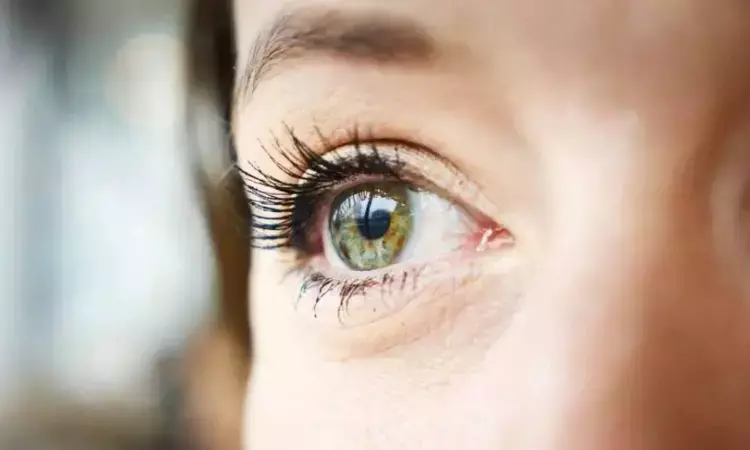- Home
- Medical news & Guidelines
- Anesthesiology
- Cardiology and CTVS
- Critical Care
- Dentistry
- Dermatology
- Diabetes and Endocrinology
- ENT
- Gastroenterology
- Medicine
- Nephrology
- Neurology
- Obstretics-Gynaecology
- Oncology
- Ophthalmology
- Orthopaedics
- Pediatrics-Neonatology
- Psychiatry
- Pulmonology
- Radiology
- Surgery
- Urology
- Laboratory Medicine
- Diet
- Nursing
- Paramedical
- Physiotherapy
- Health news
- Fact Check
- Bone Health Fact Check
- Brain Health Fact Check
- Cancer Related Fact Check
- Child Care Fact Check
- Dental and oral health fact check
- Diabetes and metabolic health fact check
- Diet and Nutrition Fact Check
- Eye and ENT Care Fact Check
- Fitness fact check
- Gut health fact check
- Heart health fact check
- Kidney health fact check
- Medical education fact check
- Men's health fact check
- Respiratory fact check
- Skin and hair care fact check
- Vaccine and Immunization fact check
- Women's health fact check
- AYUSH
- State News
- Andaman and Nicobar Islands
- Andhra Pradesh
- Arunachal Pradesh
- Assam
- Bihar
- Chandigarh
- Chattisgarh
- Dadra and Nagar Haveli
- Daman and Diu
- Delhi
- Goa
- Gujarat
- Haryana
- Himachal Pradesh
- Jammu & Kashmir
- Jharkhand
- Karnataka
- Kerala
- Ladakh
- Lakshadweep
- Madhya Pradesh
- Maharashtra
- Manipur
- Meghalaya
- Mizoram
- Nagaland
- Odisha
- Puducherry
- Punjab
- Rajasthan
- Sikkim
- Tamil Nadu
- Telangana
- Tripura
- Uttar Pradesh
- Uttrakhand
- West Bengal
- Medical Education
- Industry
Could Magnetic Cell Delivery Transform Future of Cornea Transplant Surgery?

Corneal edema or swelling is one of the most common reasons people need a corneal transplant. It happens when the cells that line the inner-most layer of the cornea, endothelial cells, decrease in number, causing the cornea to swell and lose clarity. Typically, the only option to restore vision is corneal transplantation surgery. But researchers are working on a novel way to simply replace the missing cells with an injection of donor cells. After loading the donor cells up with superparamagnetic nanoparticles, they are injected into the front of the eye. A magnetic eye patch is then placed in front of the eye and the patient lies face down. The magnet draws the cells to the correct location, where they remain and integrate. The first 21 patients treated this way experienced improved vision. The study will be presented today at AAO 2023, the 127th annual meeting of the American Academy of Ophthalmology.
“To our knowledge, we are the first group to show that injection of endothelial cells without surgical intervention can improve vision in subjects with Fuchs endothelial corneal dystrophy,” said Ellen Koo, MD, lead researcher and associate professor at the Bascom Palmer Eye Institute, University of Miami. “We are excited for the future.”
All 21 subjects had corneal edema due to Fuchs endothelial corneal dystrophy. Some underwent endothelium removal (descemetorhexis) before the cells were injected intracamerally, and some did not. They were treated at six centers across the US. Four doses (50,000, 150,000, 500,000, one million cells) were tested. The primary outcome was safety. At six months follow-up, there were no product-related adverse events. Pressure inside the eye remained stable, and no inflammation was observed. There was a dose-dependent continued improvement in vision up to 6 months after injection, with no patients requiring surgery.
Corneal transplantation surgery is an effective treatment, but it requires a highly trained corneal surgeon and donor tissue. Both are in good supply in the US, but many countries have a shortage of both. Dr. Koo hopes a cell replacement approach would expand access to sight-saving treatment to people around the world.
“With this treatment of cell therapy, hundreds of patients can be treated with one donor cornea,” Dr. Koo said. “Greater accessibility, as well as the fact that the patient does not need to go to an operating room for treatment, would mean more patients at earlier stages of disease can receive treatment for corneal edema.”
Importantly, receiving this type of treatment wouldn’t preclude patients from having future corneal transplant surgery if needed, potentially allowing patients to be treated at an earlier stage of disease. Additionally, any ophthalmologist could provide the treatment; it wouldn’t be limited to corneal specialists, which would increase access to more patients.
“There is a new frontier in the treatment of corneal endothelial dysfunction and this technology will certainly shift the therapeutic paradigm,” Dr. Koo said.
Dr Kamal Kant Kohli-MBBS, DTCD- a chest specialist with more than 30 years of practice and a flair for writing clinical articles, Dr Kamal Kant Kohli joined Medical Dialogues as a Chief Editor of Medical News. Besides writing articles, as an editor, he proofreads and verifies all the medical content published on Medical Dialogues including those coming from journals, studies,medical conferences,guidelines etc. Email: drkohli@medicaldialogues.in. Contact no. 011-43720751


